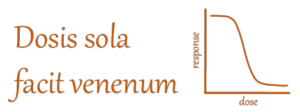THE R PROGRAM
and the DRC package
A short introduction is in the first chapter at the homepage: Statistical Analysis of Agricultural Experiments using R.
In this introduction you find explanations of how to install R and use the RStudio editor.
Numerous books have been published on R and it would a heavy task to keep up with them all. Also, R is in many respects a dynamic language which has its strengths and its shortcomings, but the dynamic does ensure that new ideas and procedures in statistics are being tested on real data.
Because of this dynamic “nature”, whenever you use R for data analysis remember to state the R version you use. Alas, Book on R programming are often outdated in a few years as new facilities are included and old add-on packages are deleted.
By 2005 the first version of the extension package drc was developed for the statistical programming environment R (R Core Team) (Wikipedia). The homepage of the R Project for Statistical Computing is r-project.org
“R is a free software environment for statistical computing and graphics. It compiles and runs on a wide variety of UNIX platforms, Windows and MacOS.” To download R, choose a preferred CRAN (Comprehensive R Archive Network) mirror. You can just choose a location near you or, as we prefer, the main UTL which is the headquarter of The R Foundation for Statistical Computing.
There is a book, however we would recommend as it is covering a large part of the R environment “R for Data Science” was written by Hadley Wickham and Garrett Grolemund. Note the book is free of charge and as are the R programme facilities.
Everybody can get access to R and dedicated statisticians have developed add on packages for virtually any statistical procedure and problem. It has become a lingua franca in universities and private and public research institutions at large.
Originally, the package drc was developed for nonlinear fitting of log-logistic models that were routinely carried out in weed, pesticide, and pharmaceutical science as well as ecotoxicological sciences.
Weed science does use Paracelsus axiom to its full extend. The sensitivity of a crop (ED10) and the control of the unwanted plants (ED90) are crucial to understand the safe use of herbicides. Weed scientists are interested in knowing which doses do not harm the crop and which doses control the weeds.
However, there is not only one dose-response curve that can describe the bioassay data. The drc package was rapidly developed to include more dose-response models, some of which are mentioned in the dose-response chapter.
Subsequently, the package has been modified and extended substantially, mostly in response to inquiries and questions from the user community. It has developed into a veritable ecosystem for dose-response analysis (Ritz et al., 2015). Currently, such extensive functionality for dose-response analysis does not exist in any other statistical software.
